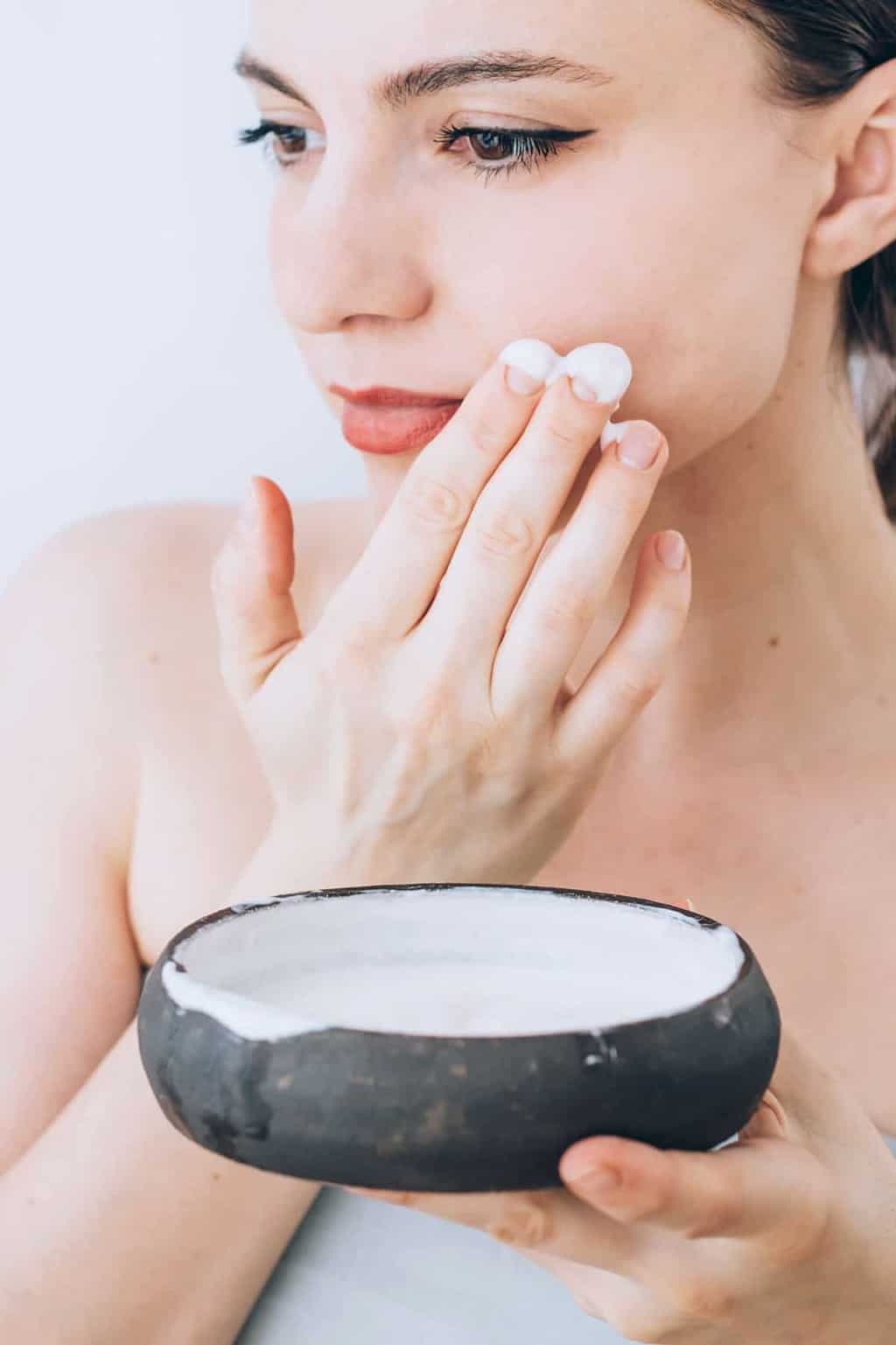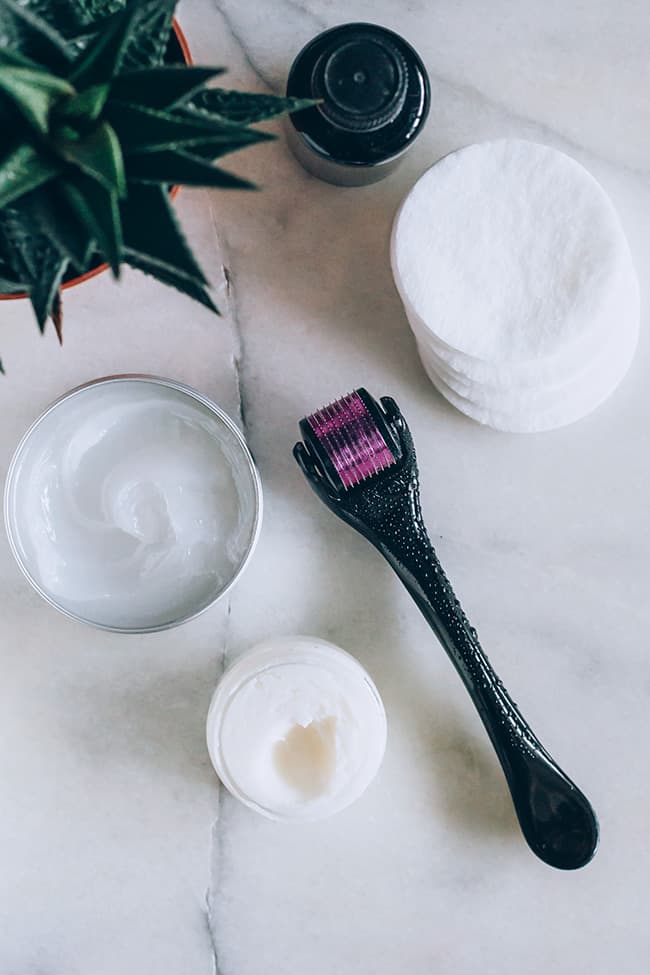If you ask the average person what they don’t like about their skin, they’re sure to come up with a laundry list of complaints—and, chances are, one of the top contenders is uneven skin texture. This is really silly, according to dermatologists, mainly because “normal” skin texture does not exist in the first place. In fact, it is perfectly normal to have skin texture that is not completely smooth.
Meet the experts
Joshua Zeichner, M.D., director of cosmetic and clinical research in dermatology at Mount Sinai Medical Center
Marisa Garshick, M.D., a dermatologist at Medical Dermatology & Cosmetic Surgery (MDCS)
Brendan Camp, M.D., a dermatologist at MDCS Dermatology
Yep—we’re led to believe that healthy skin should be super smooth like a baby’s bottom, but the reality is anything but. “Normal skin is very different from the images you are seeing on social media—it’s imperfectly perfect with pores, wrinkles, blemishes, and pigmentation, explains Joshua Zeichner, M.D., director of cosmetic and clinical research in dermatology at Mount Sinai Medical Center.
“When we are first born, our skin is completely smooth, and pores are invisible. However, as we go through puberty, oil glands become active and hair follicles mature, which contributes to the topography and rougher texture that is normal in adult skin.”
What causes uneven skin?

Acne
Put simply, uneven skin is still healthy and often the result of different factors. One of those has to do with one of the most common skin conditions out there: acne. Acne is increasing in adults, and about 15% of women are affected [source].
“While acne breakouts are normal, they can lead to changes in skin texture as acne breakouts can appear as bumps in the skin,” explains Marisa Garshick, M.D., a dermatologist at Medical Dermatology & Cosmetic Surgery (MDCS) in New York. “Acne breakouts can range from smaller whiteheads and blackheads, known as comedonal acne, or larger breakouts like inflammatory red breakouts.”
Dry skin
Another probable cause of uneven skin texture is flaky or dry skin, which can result from dead skin buildup. “Skin cell turnover slows down as we age, so it is possible to experience a buildup of dead skin,” explains Dr. Garshick. “For this reason, it can help to use products like retinoids or exfoliants that help to regulate skin cell turnover and eliminate dead skin cells, respectively.”
Age
Another culprit: age. “As we age and lose collagen, fine lines and wrinkles may become more noticeable and contribute to uneven skin texture,” says Dr. Garshick. “While this is normal, for someone who wants to improve their appearance, it can help to use a retinoid or an exfoliant to boost collagen production and improve the overall appearance.”
How To Improve Skin Texture At Home
The good news: It is possible to improve skin texture—often with a few at-home tricks of the trade. Here, dermatologists share their best tips for evening out skin texture.

1. Always apply sunscreen.
This rule of thumb cannot be overstated. In fact, sunscreen is the single most important skincare product you can apply on your face—not only for protection against skin cancer but also as an aging prevention tool.
“Sunscreen is important when it comes to textural changes as it is known that UV exposure contributes to DNA damage, which can lead to collagen breakdown,” says Dr. Garshick. “The loss of collagen can impact the overall texture of the skin by contributing to fine lines and wrinkles, increased sagging and laxity, and may make the pores appear larger.”
2. Exfoliate regularly.
Exfoliating, either chemically or physically, can help improve skin texture by helping to eliminate dead skin cells that build up on the surface and minimize the overall appearance of pores, explains Dr. Garshick.
“When dead skin cells build up, it can contribute to dullness of the skin but also make it appear rough and bumpy,” she says. “To achieve a smoother appearance, it can help to exfoliate the dead skin cells using a physical or chemical exfoliant, such as an alpha- or beta-hydroxy acid.”
3. Apply retinol.
Considered the topical gold standard for anti-aging, retinol can be quite useful when it comes to improving skin texture. “Retinoids not only help prevent acne breakouts by helping to regulate skin cell turnover, but they also work to boost collagen production, which can tighten the skin and improve the appearance of fine lines and wrinkles,” says Dr. Garshick.
“Additionally, retinoids can improve the appearance of pores, as even though pores are normal, using a retinoid can help to prevent them from becoming clogged, which can make them appear larger.”

4. Try vitamin C products.
Vitamin C products are all the rage these days—and for good reason. Vitamin C is a powerful antioxidant that helps neutralize skin-damaging free radicals that lurk in our environment and lead to uneven texture, brown spots, and premature aging.
“These unstable oxygen species can damage cellular structures like DNA, lipids, and proteins,” warns Brendan Camp, M.D., a Manhattan-based dermatologist at MDCS Dermatology. “Incorporating vitamin C into your daily regimen can help prevent these changes that lead to an uneven skin texture.”
5. Use niacinamide.
Niacinamide, or vitamin B3, is a great multi-tasking ingredient that has multiple benefits for the skin, including calming and soothing properties. Additionally, it serves as an antioxidant and can help with discoloration and evening out the skin tone. And according to Dr. Garshick,“because it also helps to support the skin barrier, it can also help with moisture retention.”

6. Try microneedling.
If you’re really unhappy with your uneven skin texture, another at-home option is using a derma roller, a handheld tool with tiny little needles on a drum-like roller. Home microneedling is milder than the ones used in a professional setting, so if you’re looking for a quick fix, make an appointment with a board-certified dermatologist for a consultation.
“In-office treatments, like microneedling, can stimulate collagen production,” says Dr. Camp. “Boosting the production of this structural protein can help tighten skin and improve scarring and pore size.”
Source by helloglow.co


